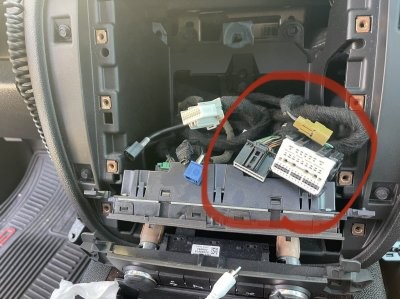After installing an aftermarket radio in your Chevy Tahoe or GMC Yukon, you might encounter a U0184 diagnostic trouble code (DTC). This code indicates a lost communication with the radio, often due to incompatibility between the new head unit and the vehicle’s computer system. While this code might seem alarming, it’s generally not a cause for significant concern. This article will explain why you’re seeing this code, how it might affect your vehicle, and potential solutions.
Why You Get a U0184 Code with an Aftermarket Radio
Modern vehicles rely on a network of interconnected modules that communicate with each other to function properly. This network, often referred to as a CAN (Controller Area Network) bus system, allows modules like the engine control unit (ECM), body control module (BCM), and radio to share information. When you replace the factory radio with an aftermarket unit, the communication pathway is disrupted. The aftermarket radio often doesn’t use the same communication protocols as the factory radio, leading to the U0184 code. Essentially, the vehicle’s computer is looking for a response from the original radio, but the new aftermarket radio can’t provide it in the expected format.
 alt text: Close up view of car diagnostic tool plugged into a vehicle's OBD-II port displaying error codes on its screen.
alt text: Close up view of car diagnostic tool plugged into a vehicle's OBD-II port displaying error codes on its screen.
Potential Effects of the U0184 Code
In most cases, the U0184 code related to an aftermarket radio won’t significantly impact your vehicle’s drivability. However, it might affect certain functionalities:
- OnStar System: You may lose OnStar functionality, as it relies on communication with the factory radio.
- Warning Chimes: Certain warning chimes, such as those for low fuel or door ajar, may be disabled or sound different.
- Steering Wheel Controls: Depending on the installation and interface used, steering wheel controls for audio functions might not work correctly.
- Vehicle Diagnostics: The U0184 code might interfere with properly diagnosing other potential issues within the vehicle’s network. While flashing factory modules is generally safe, having this code present could complicate the process and potentially lead to errors if not handled carefully. For example, a technician might need to take extra steps to ensure the aftermarket radio doesn’t interfere with the programming procedure. This might involve disconnecting the radio or using specialized tools.
Solutions and Workarounds for the U0184 Code
While completely eliminating the U0184 code after installing an aftermarket radio might not be possible, there are ways to mitigate its effects:
- Ignore the Code: As mentioned earlier, the code itself usually doesn’t affect drivability. You can choose to ignore it if it doesn’t bother you. However, be aware of its potential impact on diagnostics.
- Data Bus Interface Modules: Devices like the Maestro RR are designed to bridge the communication gap between aftermarket radios and the vehicle’s computer. While they might not eliminate the code entirely, they can help retain features like steering wheel controls, OnStar, and warning chimes. Utilizing a data bus interface can provide a more seamless integration of the aftermarket radio into the vehicle’s system.
- Professional Installation: Consulting a professional car audio installer can ensure proper integration of the aftermarket radio, minimizing potential issues and maximizing feature retention. They can also provide guidance on choosing the correct wiring harnesses and interfaces.
Conclusion
The U0184 code after installing an aftermarket radio is a common occurrence due to communication incompatibility. While usually not critical, it can affect certain features. Ignoring the code, using a data bus interface module, or seeking professional installation are viable solutions. Remember to consult resources like Crutchfield for accurate vehicle-specific information when selecting and installing aftermarket radios, as their database might not always be up-to-date. Don’t hesitate to consult online forums and communities dedicated to your specific vehicle model for advice and troubleshooting tips from other owners who have successfully navigated this issue.

